Implementing CQRS with Akka
Michał Tomański


@michaltomanski
CQRS
What is it about?
- Command Query Responsibility Segregation
- Design/architecture pattern
class UserService {
createUser(User user): Unit
getUser(long id): User
}class UserWriteService {
createUser(User user): Unit
}
class UserReadService {
getUser(long id): User
}And that's basically it
Let's mix it!
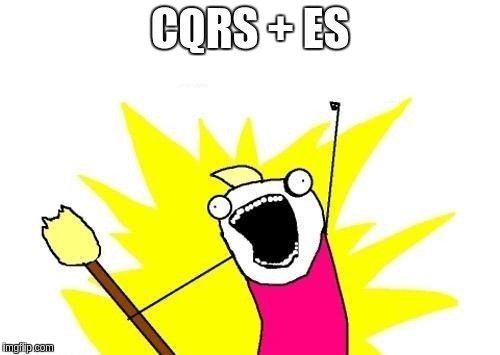
Event Sourcing
- The state of an object is equivalent to all past events applied one by one
- Persist all the events to a journal
- Events are immutable, they are facts
- Events can be replayed to restore the state
Event Sourcing
- System receives command
- Command gets validated
- Command generates events
- Events get persisted
- Events are applied on the state
DeactivateUser(id = 1)
Is the user with id=1 active?
UserDeactivated(id = 1)
UserDeactivated(id = 1) goes to DB
isActive = false
Why?
- Persist facts
- Write only, never modify/delete
- Better domain modelling
- Temporal queries
- Free audit logs / BI data
- Cool, but how do we query this thing?
- Well, you don't
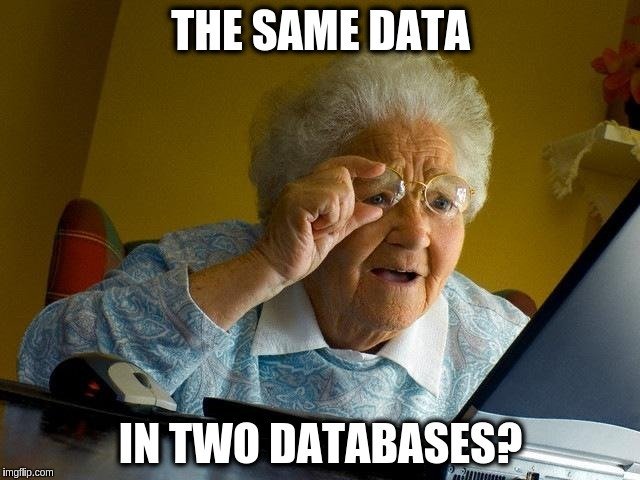
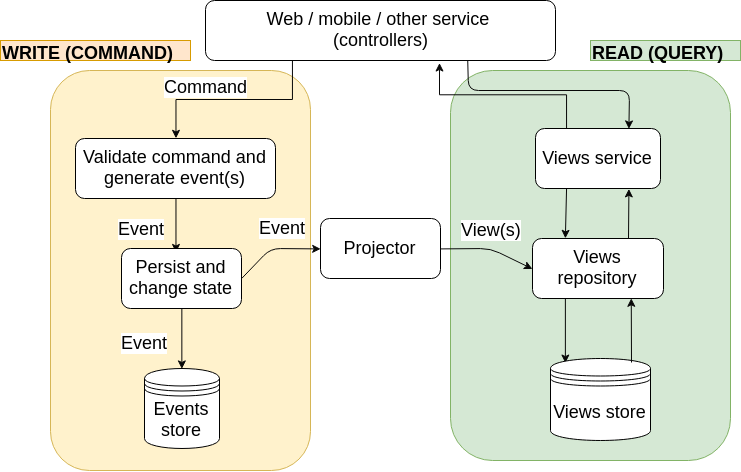
Why bother?
- Everything said earlier
- Suitable database engines for each side
- Independent read and write side scalability
- Independent data replication factor
- Read or write oriented domain
- Better performance with prepared views
- Loose coupling
Let's build something!



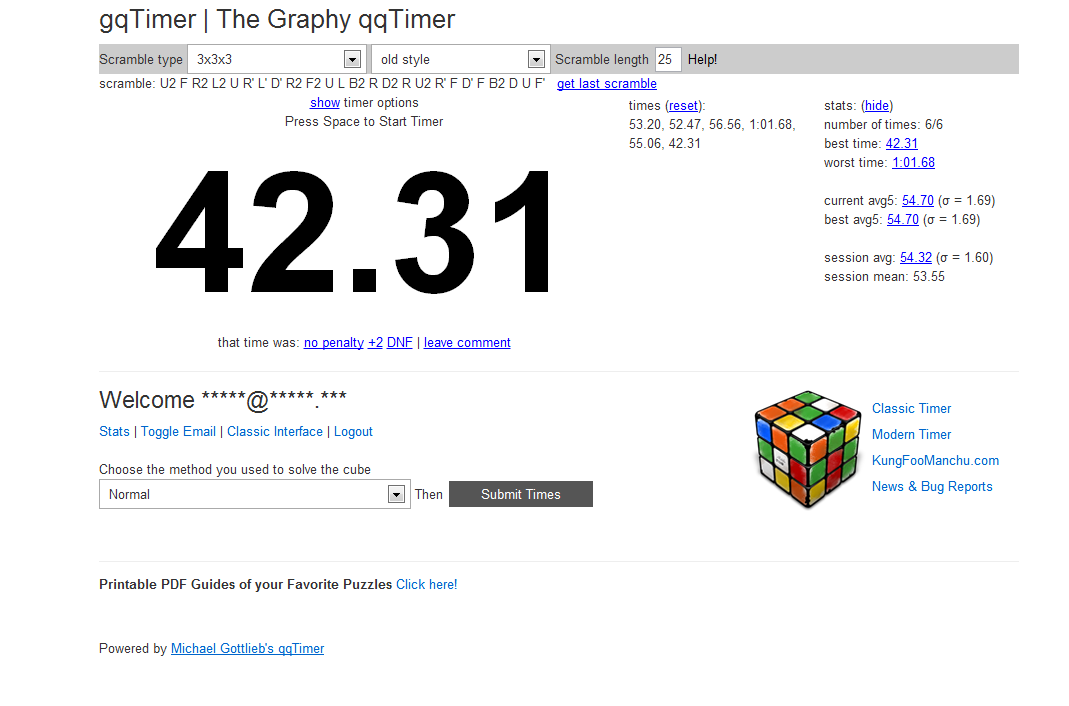
Awesome Timer
®
- Measures the time
- Online
- Users see other users' results (rivalry)
Overview
Awesome Timer
®
Write side
- Accept user's new time
- Remove the user's time (in case of unintentionally stopping the timer)
- Add +2s (penalty)
Rare
Awesome Timer
®
Read side
Show to the user his:
- Best single time
- Best average of 5
- Best average of 12
- Best average of 100
- Current average of 5, 12, 100
- Last 100 times
Show to the user other people's:
- Best single time
- Best average of 5
- Best average of 12
- Best average of 100
- Current average of 5, 12, 100
Awesome Timer
®
Read side
Average of 5: 16, (20), 18, 18, (15)
= (16 + 18 + 18) /3
Awesome Timer
®
Writes and reads
- Extremely simple write side (just persist the username and the time), but with (hopefully) a lot of traffic
- Quite complicated and expensive reads (calculating best average of 5 among thousands of entries, querying multiple users)
- Typical CRUD is not the case here
- Ok, how do we do that? We build all of those persistence, projections etc?

- A toolkit focused on actors model
- Useful for concurrent, distributed and message driven systems
- High-level abstraction

Actor
- Encapsulate state and behavior
- React to a message
- Supervision
Actor
class Speedcuber extends Actor {
var times = Nil
def receive = {
case AddTime(time: Long) => times :+ time
}
}
actor ! AddTime(500)Persistent Actor
- Persist every valid event to the journal
- Do your business logic after persistence
- Replay all the events when needed
Persistent Actor
class Speedcuber extends PersistentActor {
var times = Nil
override def receiveCommand: Receive = {
case addTime: AddTime =>
persist(addTime) { event =>
times = times :+ event.time
}
}
override def receiveRecover: Receive = {
case addTime: AddTime => times = times :+ event.time
case RecoveryCompleted => println("Events recovery completed")
}
override def persistenceId: String = "speedcuber"
}Persistent Actor
As a domain entity
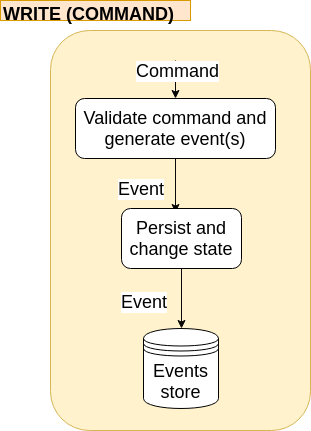
Persistent Actor
Journal (Cassandra)
Persistent Actor
Storage plugins
- Cassandra, DynamoDB, Mongo, SQL etc.
- Storage initialization done automagically by the plugin, lazily or eagerly
- Specified in .conf file
akka.persistence.journal.plugin = "cassandra-journal"
akka.persistence.snapshot-store.plugin = "cassandra-snapshot-store"Projection
Akka Persistence Query as a projection
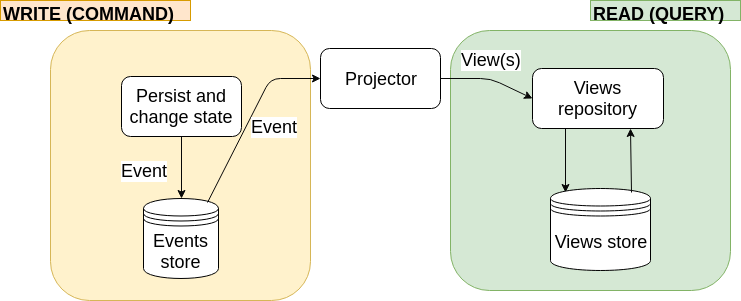
Akka persistence query
Postgresql
Projection
Akka Persistence Query as a projection
- Get source of events by tag from journal
- Starting from last offset
- Map the stream with async function
- At the end, save the offset of the event
- When handling the event, construct the view and upsert to the database
val s = readJournal.eventsByTag("Speedcuber")
val s = readJournal.eventsByTag("Speedcuber", state.offset)
s.mapAsync(1)(handleEvent).runWith(Sink.foreach(offset => self ! SaveOffset(offset)))
def handleEvent = {
case EventEnvelope(offset, _, _, event: BestAvgChanged) =>
viewBuilder.upsertBestAvgView(BestAvg(event.user, event.millis)).map(_ => offset)val s = readJournal.eventsByTag("Speedcuber", state.offset)
val s = readJournal.eventsByTag("Speedcuber", state.offset)
s.mapAsync(1)(handleEvent)val s = readJournal.eventsByTag("Speedcuber", state.offset)
s.mapAsync(1)(handleEvent).runWith(Sink.foreach(offset => self ! SaveOffset(offset)))
Cluster Singleton
Projection as a Cluster Singleton
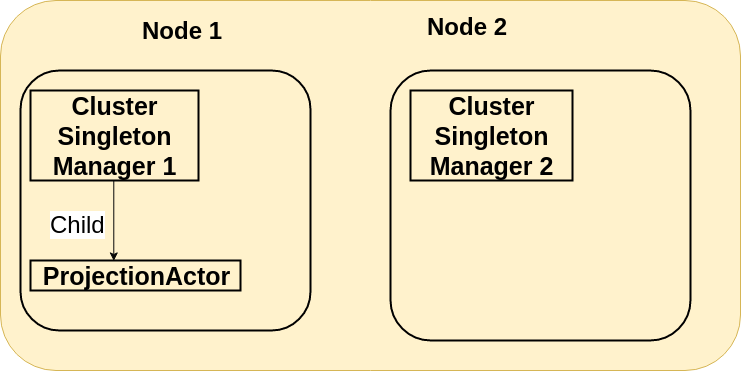
The oldest node
Controllers
Communicating with the world
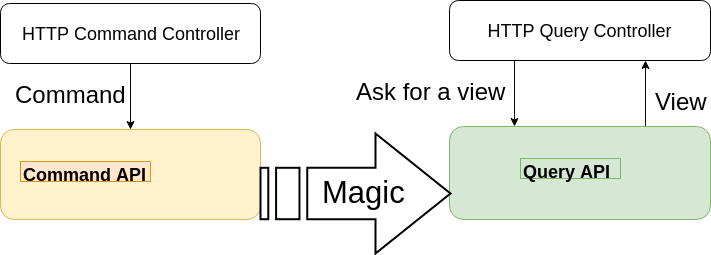

Eventual consistency
Should I care?
- Read data will be consistent with what is inside the event store... eventually.
- Getting an updated view by the user might take a while
- But isn't it always the case?
- Data is not wrong, it's just old
Cubing time
Live demo
Summary
We have a service...
- That can have read and write model scaled independently
- With databases suitable for read and write
- Easy to integrate with other services via events messaging
- Easy to be scaled horizontally with state recovered
- With complete and immutable events history
- With prepared expensive views
- Easy to be tested and debugged (just dump events from prod)
Implementing CQRS with Akka
Michał Tomański


@michaltomanski
slides.com/michaltomanski/cqrs
github.com/michaltomanski/cqrs-demo
vote.scalaua.com
Challenges
Eventual consistency
Should I care?
- Well, there might be a problem while making domain validations against views...
- When? When not?
- Send a compensation event
- Tweak with polling times
- Keep track of inconsistency issues
- ... Or do not design your (micro)service this way
¯\_(ツ)_/¯
Cluster sharding
As a domain entities sharding
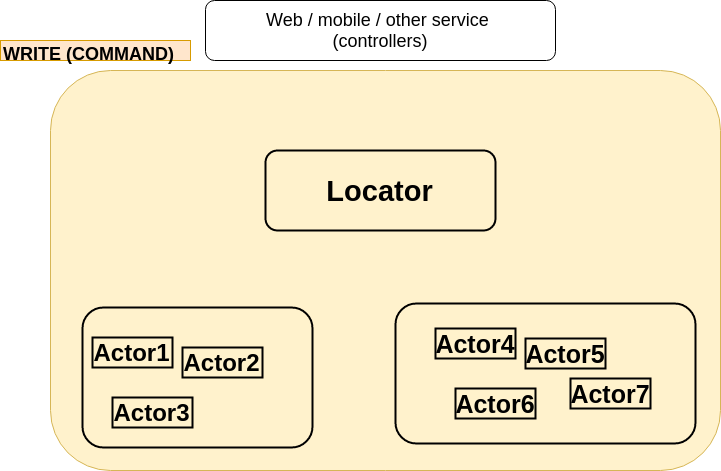
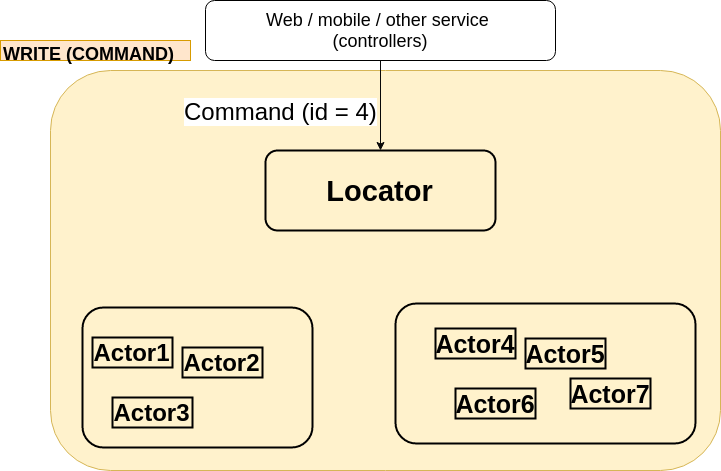
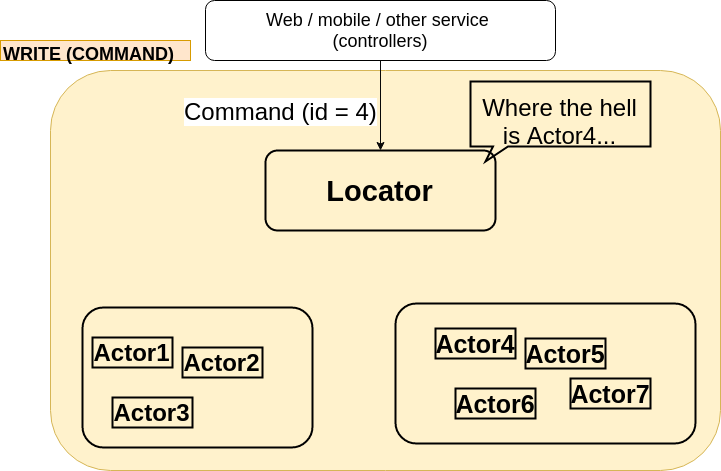
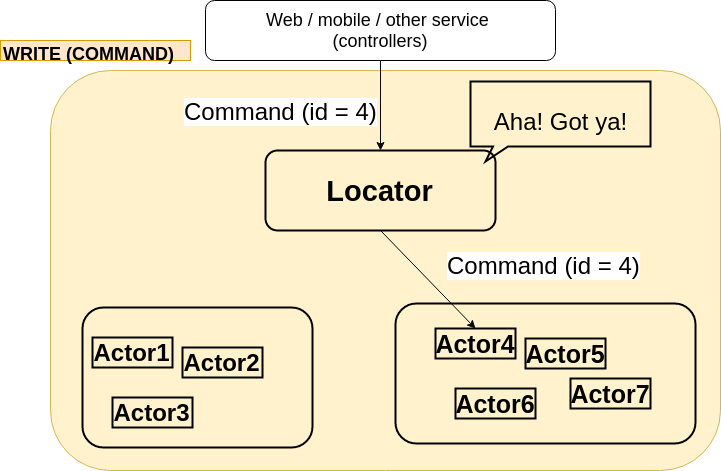
Node 1
Node 2
Events evolution
- We want an actor and the projection to always work on the newest events versions
- Events stored in journal can be upcasted to the newest version during replay by adapters
- Good serialization method may also help
Entities startup
- Use rememberEntities flag
- Rebalancing shards to another nodes
- Startup of the application
- Journal might get overwhelmed
- Use snapshotting
- Passivation after idle timeout
Serialization
- Domain events persistence
- Internal events persistence (e.g. shard coordinator)
- Remoting for domain events
- Remoting for internal events
Remoting
- Akka is designed for remoting
- Just a matter of configuration
Persistent Actor
Event adapters
- Tagging - e.g. fetching only domain events
- Events versioning
event-adapters = {
speedcuber = "com.mtomanski.timer.infrastructure
.akka.adapter.SpeedcuberEventsTaggingAdapter"
}
event-adapter-bindings = {
"com.mtomanski.timer.domain.model.Speedcuber" = [speedcuber]
}class SpeedcuberEventsTaggingAdapter extends WriteEventAdapter {
override def toJournal(event: Any): Any = Tagged(event, Set("Speedcuber"))
...
}Copy of CQRS
By liosedhel
Copy of CQRS
- 1,669


